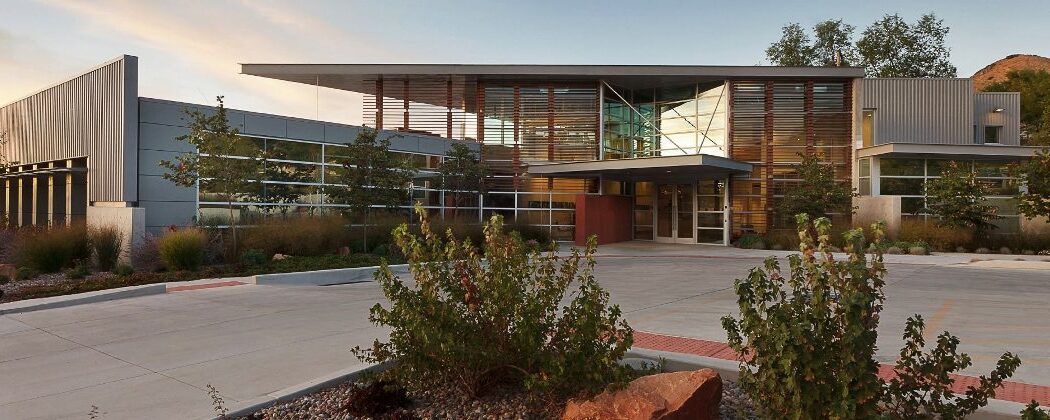Climate change is impacting our world with increasing severity and frequency, and the need for resilience in our built environment has never been more critical.
Disaster preparedness and recovery is also key in building resilience. LEED is widely recognized for its focus on sustainable and environmentally responsible building practices, and resilience is a clear extension of this work. We know that more sustainable buildings are a critical component to enhancing community resilience.
The U.S. Green Building Council (USGBC) has adopted the definition of resilience established by the National Oceanic and Atmospheric Administration: “the ability to prepare and plan for, absorb, recover from, and more successfully adapt to adverse events.” This definition encompasses various aspects of building performance, from ensuring business continuity during disruptions and disturbances to responding effectively during emergencies.
The Future of LEED principles provide a foundation for the next versions of the LEED rating systems that specifically addresses resilience: Inspire and recognize adaptive and resilient built environments.
In the draft of the first of the LEED v5 rating systems to be released, LEED for Operations and Maintenance: Existing Buildings, credits addressing resilience fall into two categories:
- Credits explicitly, directly and primarily focused on resilience
- Credits explicitly but secondarily focused on resilience
These draft credits acknowledge the vital role buildings play in fostering resilience in the face of climate-related challenges and adverse events. They have been developed through thousands of volunteer hours and in collaboration with the LEED committees, including the Resilience Working Group.
Resilience credits in LEED v5
Credits explicitly, directly and primarily focused on resilience:
- Prerequisite—Assessment for Climate Resilience: This credit requires building projects to assess and plan for climate-related risks and vulnerabilities.
- Credit—Operational Planning and Response for Resilience: This credit encourages projects to develop strategies and plans for maintaining operations during disruptive events, ensuring business continuity.
- Prerequisite—Occupant Needs Assessment: This credit assesses the needs of building occupants during adverse events to ensure their safety and well-being.
Credits explicitly but secondarily focused on resilience:
- Prerequisite—Site Management Policy: This credit requires site management policies to consider changing climate conditions, performance standards and continuity protocols in line with the LEED v5 Operations and Maintenance (O+M) Sustainable Sites credits Rainwater Management, Heat Island Reduction and Light Pollution Reduction.
- Credit—Grid Harmonization: Recognizing future climate change disruptions and grid reliability concerns, this credit encourages incorporating concepts related to peak load management, energy storage and demand response.
- Option 2: Thermal and/or Electric Energy Storage
- Option 3, Path 1: Demand Response Program Available and Participation
- Credit—Indoor Air Quality Performance: This credit emphasizes strategies for infection risk management and response to outdoor conditions that could negatively impact indoor air quality.
Why resilience matters
The importance of resilience in our built environment cannot be overstated. The increase in the frequency and severity of extreme weather events, such as hurricanes, wildfires, floods and heat waves can disrupt critical infrastructure, endanger lives and damage property. To mitigate these risks, our buildings must be designed, constructed and operated with resilience in mind.
Resilient buildings are better equipped not just to withstand natural disasters, but also to recover more quickly from adverse events. They provide a safe haven for occupants, support business continuity and reduce the strain on emergency services. By addressing climate resilience through the LEED v5 resilience prerequisites and credits, the green building community is taking a proactive stance in adapting to the challenges posed by our changing climate.
The resilience credits in LEED v5 O+M represent a significant step forward in emphasizing the importance of planning, response and adaptability in the face of adverse events.
As we continue to face the consequences of climate change, the integration of resilience into building design and management is essential to saving lives and averting severe economic loss. Supporting a built environment that is not only environmentally responsible, but also resilient in the face of an uncertain climate future is a critical component of USGBC’s mission.
What is new in LEED v5
LEED v5 recognizes that readiness and adaptation are critical and rewards operational preparedness for extreme events.
- O+M: Helps projects understand who is in the building and meets occupant needs with a health-centric approach, including identifying health resilience goals.
- O+M: Requires all projects to conduct an assessment for climate resilience and rewards proactive establishment of a plan for responding to present and potential future hazards that could affect the project site and/or building function.
- BD+C: Is being developed to promote proactive evaluation of, and preparation for, the changing climate and the risks posed by shocks and stressors. Credits are anticipated to promote resilience strategies in site design, envelope and infrastructure design, and ventilation system design.
Image credit: Michael Schoenfeld/USGBC.

